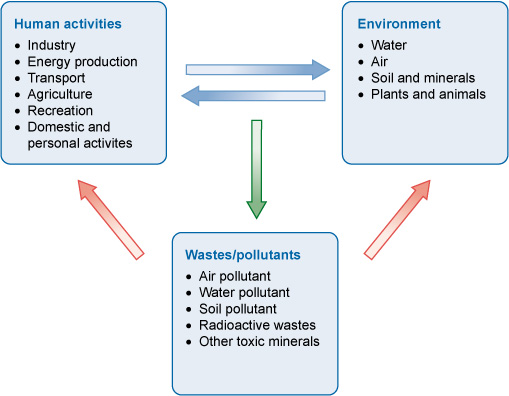1.3 Production of waste and pollutants
Following on from our use of natural resources, it is inevitable that wastes are produced. For the WASH sector, the most important of these is our own bodily wastes. The impacts of open defecation and inadequate sanitation on human health and on the wider environment are profound. Waterborne diseases are caused by pathogens (disease-causing agents) in water and food that have been contaminated by the wastes from infected people. Preventing this connection between human wastes and the intake of contaminated water is the primary goal of WASH services.
Industry, agriculture and energy production all generate wastes that can pollute air, water and soil. Pollution means the introduction into the environment of substances liable to cause harm to humans and other living organisms. For example, the leather industry produces large amounts of liquid wastes from the tanning process. These wastes contain organic materials such as fat from the hides and toxic (poisonous) chemicals including some human carcinogens (cancer-causing agents). Another example is the release of so-called greenhouse gases such as carbon dioxide, methane and nitrous oxide, which contribute to human-induced climate change. (Pollutants and pollution are the topics of Study Sessions 7 and 8 and climate change is described in more detail in Study Session 9.)
Figure 1.8 summarises the interactions between ‘human activities’ and ‘the environment’. The green arrow indicates the waste generated as a product of this interaction. The red arrows indicate thenegative effect on both the environment and humans if the waste is not properly managed.

1.2.3 Water resources
